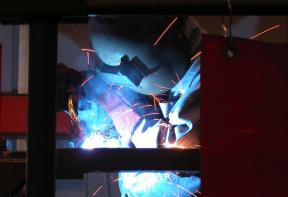Welding 101
Bring a welder into your workshop for a whole new world of project possibilities
Wood is wonderful stuff, but I wonder sometimes if woodworkers aren’t hooked on the material so much as they are on the act of creating things with it. That’s the case with me, and that’s why I’m writing about welding in a magazine usually devoted to oak, pine and plywood. Several significant technical advances have hit the world of welding over the past few years, and they’ve made welding more accessible to the average workshopper. Working with iron, steel and even aluminum is more than possible these days; it’s also easy and affordable if you’re interested in trying something new.
You’ve probably noticed how prices for tablesaws, planers, jointers and other machines have held steady or dropped, while quality is on the rise. This same dynamic has started to unfold with welding tools, and it’s gathering steam. High-quality, reasonably priced, easy-to-use welders and cutting equipment are now available. You can even do some pretty serious electric welding these days using a machine plugged into an ordinary 120-volt outlet.
Getting started
Welding involves melting pieces of adjoining metal so they come together as one. A gas flame or an electric arc can supply the heat required. For most applications, electric welding is simpler than gas: you don’t need to rent tanks, and many electric machines are easily portable.
There are two main options for electric welding–stick welders and the new breed of low-cost, portable wire-feed welders. Despite significant differences in ease of use and applications, both systems are based on the same electrical principles. You’ll need an understanding of these before you can make sense of the technology.
During any electric welding operation, an arc jumps from the tip of a handheld welding electrode across a gap that’s 1/16″ to 1/8″ from the metal being joined. This arc creates enough heat to melt the metal along each side of the joint line (about 6,000ºC worth of heat at the heart of the arc), plus any additional metal added to the weld during the process to boost strength. A ground cable is clamped to the metal item to complete the circuit, allowing electrons to flow. This is the theory behind all electric welding, although how this plays out with stick versus wire-feed systems varies quite a bit.
Jump to a section
- Page 1 : Bring home a welder for more shop options
- Page 2 : Stick welders vs. wire-feed welders
- Page 3 : MIG welding
- Page 4 : Cutting metal
- Page 5 : Brazing and eye protection for welders
- Page 6 : Tanks, where to learn to
To leave a comment, please log in












No comments